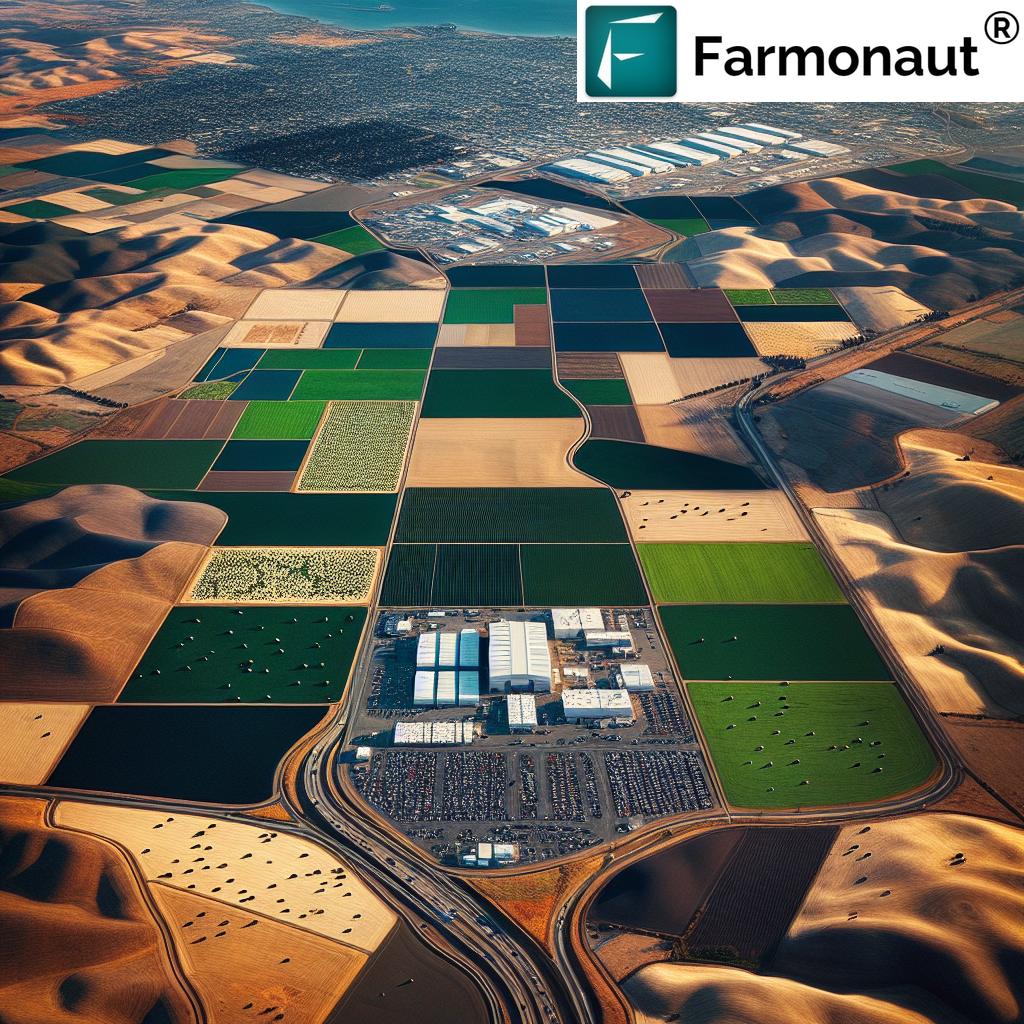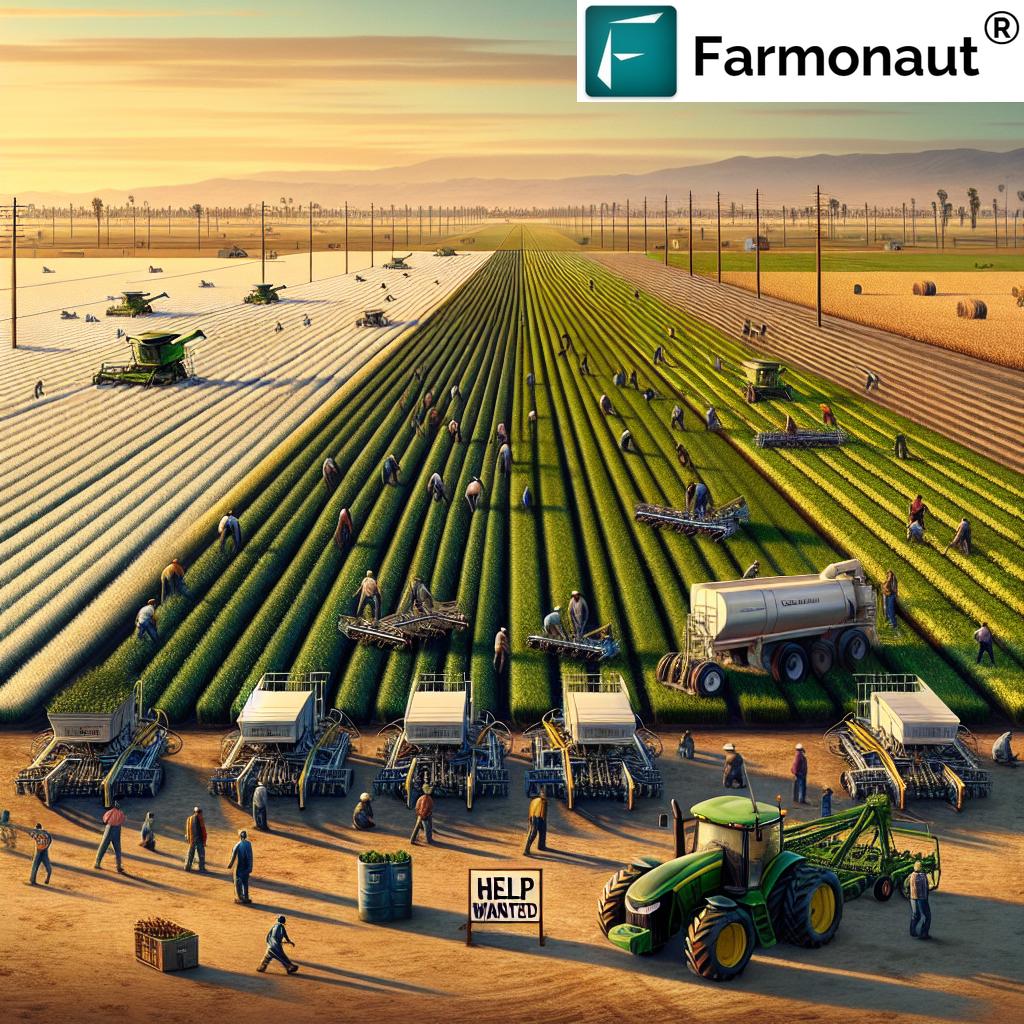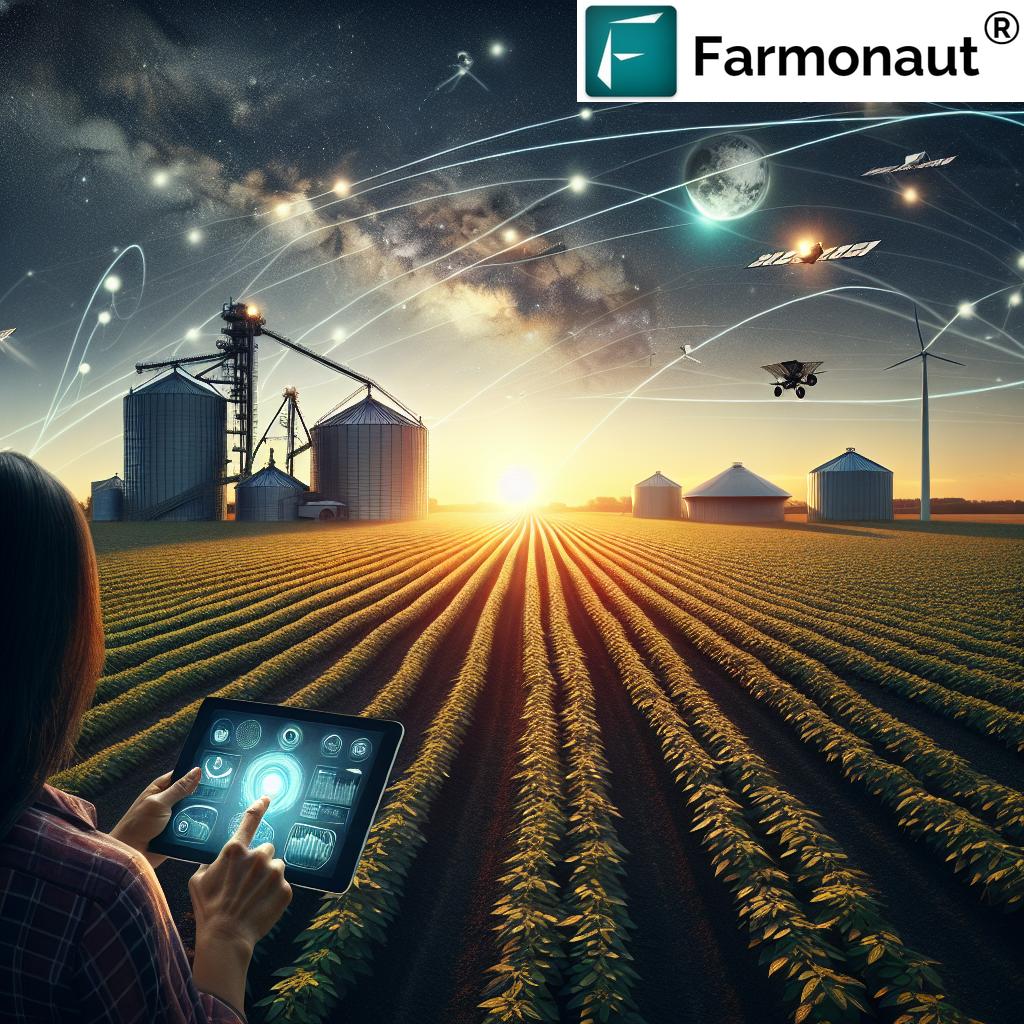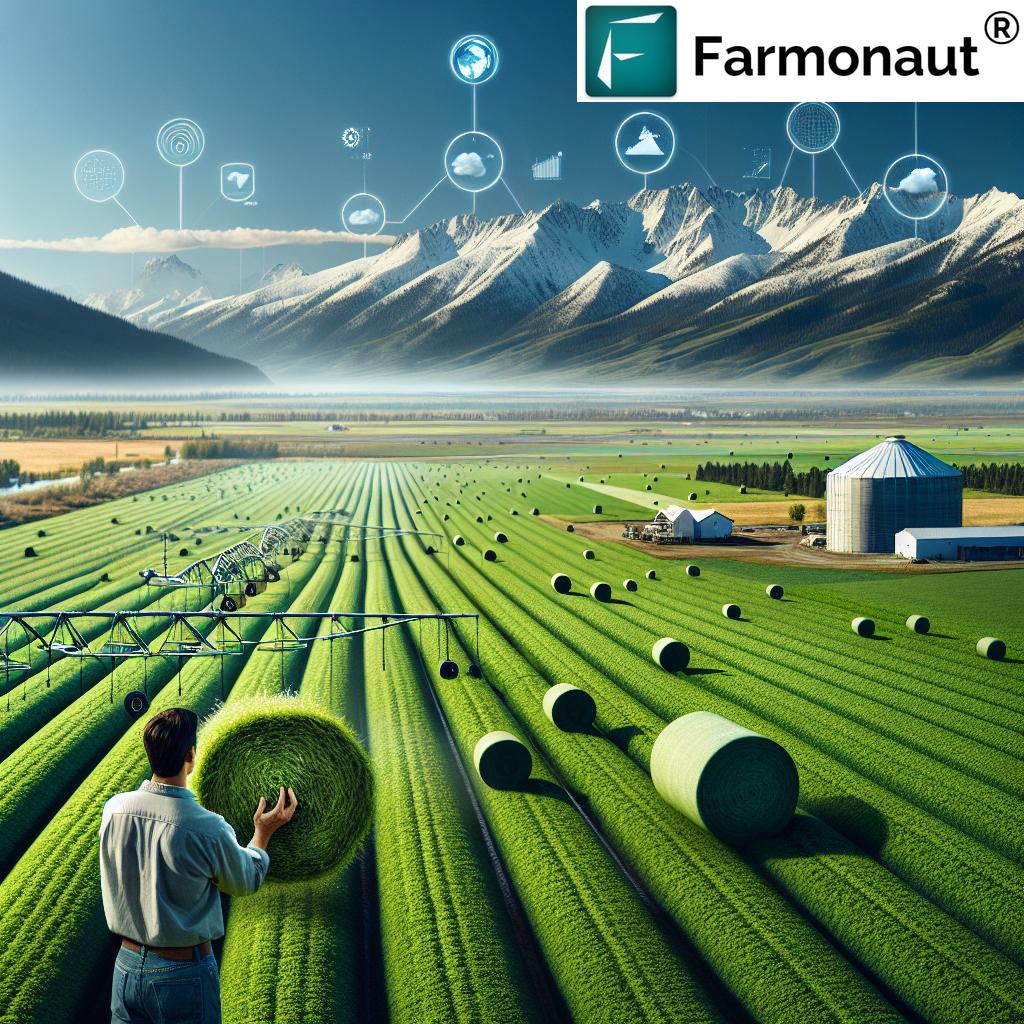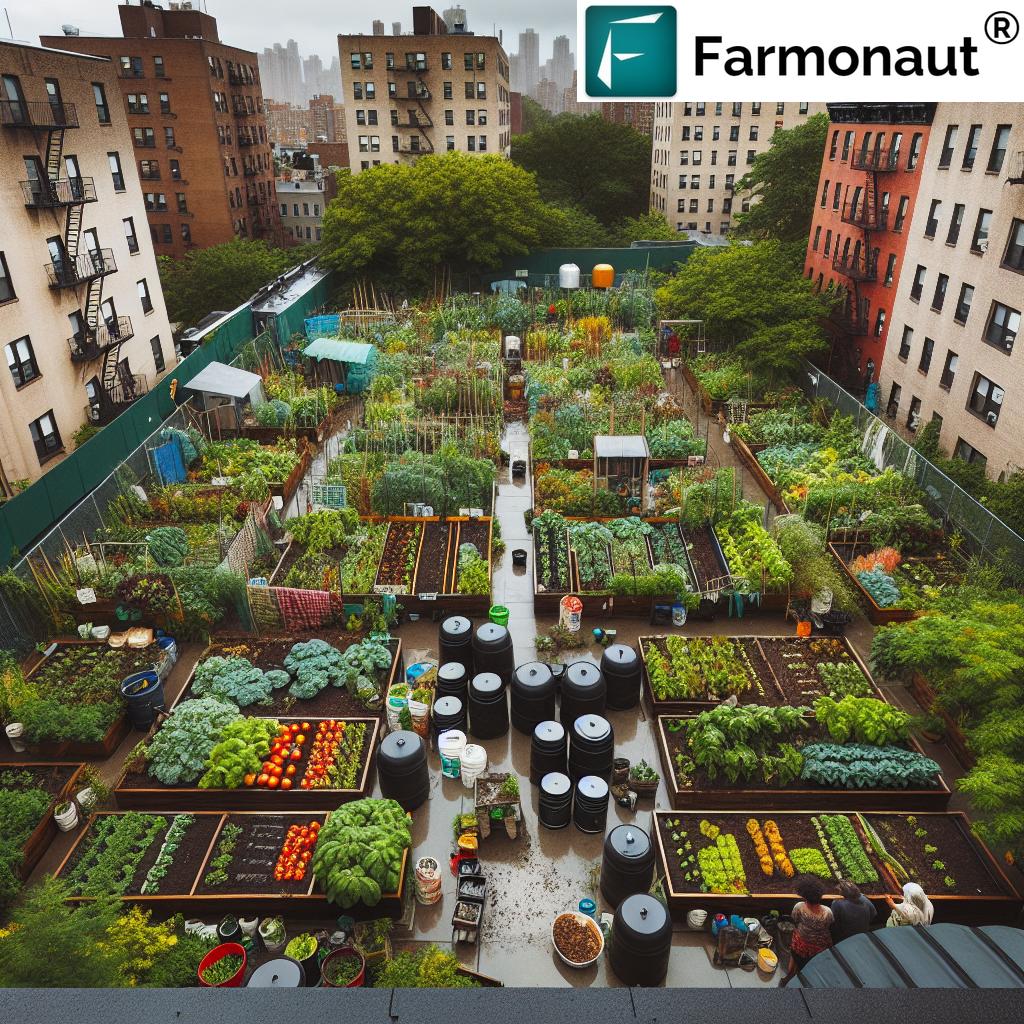Revolutionizing Indoor Agriculture: Montana’s Sustainable Farming Innovations Boost Sales and Crop Yield
“Indoor agriculture technology can reduce land and water usage by 90% compared to traditional farming methods.”
In the heart of Montana, a revolution in indoor agriculture is taking root, transforming the landscape of sustainable farming and reshaping our approach to food production. As we delve into the latest industry trends, we’ll explore how controlled environment agriculture is optimizing crop yields and distribution, meeting the growing demand for fresh produce in innovative ways.
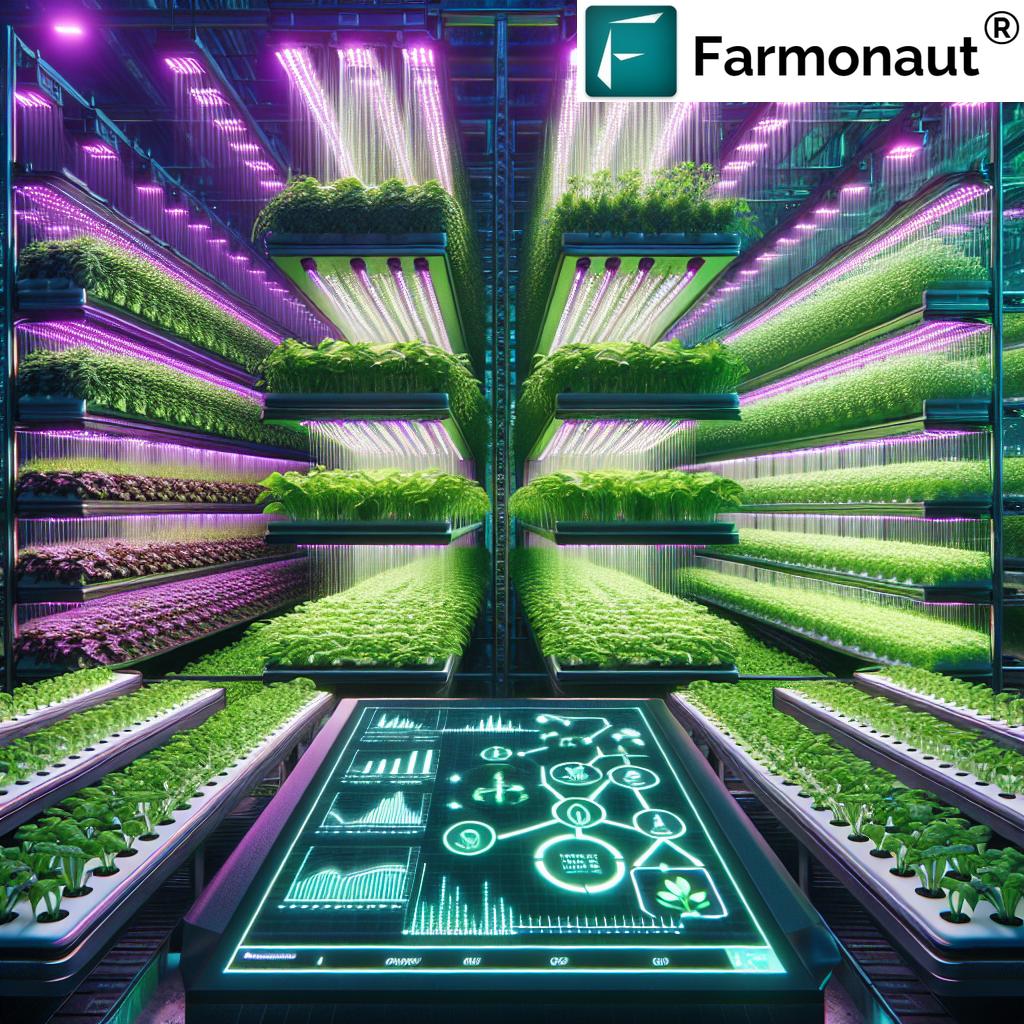
At the forefront of this agricultural revolution is Local Bounti Corporation, an innovative indoor agriculture company based in Hamilton, Montana. Their recent financial results for the third quarter of 2024 have sent ripples through the industry, marking a significant 50% increase in sales compared to the previous year. This remarkable growth is a testament to the power of sustainable farming methods and the increasing consumer demand for locally-grown, fresh produce.
The Rise of Controlled Environment Agriculture
Controlled environment agriculture (CEA) is at the heart of Local Bounti’s success. This innovative approach to farming allows for precise control over growing conditions, including temperature, humidity, light, and nutrients. By utilizing vertical farming solutions and hydroponic growing systems, Local Bounti has achieved remarkable efficiency in their production processes.
- 90% reduction in land use compared to traditional farming
- 90% reduction in water consumption
- Significantly increased crop yields
- Year-round production capabilities
These advancements in agricultural innovation are not just improving efficiency; they’re reshaping the entire landscape of food production. As we face global challenges such as climate change and population growth, the need for sustainable, high-yield farming methods has never been more critical.
Local Bounti’s Strategic Expansion and Product Innovation
CEO Craig Hurlbert attributes Local Bounti’s impressive growth to an evolving commercial strategy. This strategy focuses on two key areas:
- Expanding Product Mix: Local Bounti has introduced new high-velocity offerings, including various salad blends and grab-and-go salad kits. These products are now being shipped to customers, with additional distribution planned for the fourth quarter.
- Strengthening Retail Partnerships: By focusing on major retail partners, Local Bounti has expanded its reach and solidified its position in the market.
Despite these successes, the company faced challenges in meeting anticipated production ramp-up due to shifts in customer demand, particularly for specialty products like arugula and spinach. This highlights the importance of agility and responsiveness in the ever-changing landscape of fresh produce distribution.
Operational Updates and Facility Expansions
Local Bounti’s growth strategy extends beyond product development to include significant operational expansions:
- Successfully transitioned Hamilton facility to commercial production
- Completed capacity expansion at the Georgia facility
- Ongoing operations at Texas and Washington locations
These expansions are crucial for meeting the growing demand from retail partners and ensuring a consistent supply of fresh, sustainably-grown produce. The company’s commitment to aligning investments with customer demand and distribution strategies demonstrates a thoughtful approach to growth in the competitive indoor agriculture sector.
“A leading agtech firm reported a 50% increase in sales, showcasing the growing demand for indoor farming solutions.”
Financial Outlook and Capital Strategy
President and CFO Kathleen Valiasek emphasized the importance of optimizing operations and capital structures to support sustainable growth. Local Bounti is exploring various financing options, including:
- Sale-leaseback transactions
- Partnerships with USDA lenders
These strategies aim to facilitate growth initiatives while maintaining a disciplined approach to capital allocation. The company anticipates fourth-quarter revenues of approximately $11 million, reflecting about a 67% year-over-year growth. This projection is driven by the operational ramp-up of facilities and the introduction of high-demand products.
For those interested in exploring agtech investment opportunities, Local Bounti’s growth trajectory and innovative approach to indoor agriculture present an intriguing case study. The company’s focus on sustainable practices and efficient resource utilization aligns well with growing consumer and investor interest in environmentally responsible businesses.

The Power of Stack & Flow Technology
At the core of Local Bounti’s success is its patented Stack & Flow Technology. This innovative approach to indoor agriculture combines the best aspects of vertical farming and greenhouse growing:
- Vertical Farming (Stack): Maximizes space efficiency by growing crops in vertically stacked layers.
- Greenhouse Growing (Flow): Utilizes natural sunlight and controlled environments for optimal plant growth.
The result is a system that significantly enhances crop production while using 90% less land and water compared to traditional farming methods. This technology is a prime example of how efficient water use in agriculture can be achieved without compromising on yield or quality.
The Future of Sustainable Agriculture
As we look to the future, the innovations pioneered by companies like Local Bounti are set to play a crucial role in addressing global food security challenges. The ability to produce high-quality, fresh produce year-round with minimal environmental impact is a game-changer for the agriculture industry.
Key benefits of indoor agriculture technology include:
- Reduced transportation costs and emissions due to local production
- Decreased reliance on pesticides and herbicides
- Improved food safety and traceability
- Enhanced resilience to climate change and extreme weather events
These advancements are not just transforming the way we grow food; they’re reshaping entire supply chains and distribution networks. As consumer demand for fresh, locally-grown produce continues to rise, we can expect to see further innovations in crop yield optimization and sustainable farming practices.
Comparing Indoor Agriculture Technologies
| Technology Type | Land Use Efficiency | Water Use Efficiency | Estimated Crop Yield Increase | Energy Consumption | Initial Investment Cost | Suitable Crops |
|---|---|---|---|---|---|---|
| Vertical Farming | 95% reduction | 95% reduction | Up to 350% | High | High | Leafy greens, herbs, small fruits |
| Hydroponics | 80% reduction | 90% reduction | Up to 200% | Medium | Medium | Leafy greens, tomatoes, cucumbers |
| Aeroponics | 90% reduction | 98% reduction | Up to 300% | High | High | Leafy greens, root crops |
| Aquaponics | 85% reduction | 95% reduction | Up to 250% | Medium | High | Leafy greens, herbs, fish |
This comparison highlights the significant advantages of various indoor agriculture technologies over traditional farming methods. Each system offers unique benefits and is suited to different types of crops, allowing for a diverse and efficient approach to sustainable food production.
The Role of Technology in Modern Agriculture
While companies like Local Bounti are pioneering advancements in indoor agriculture, other technological solutions are also playing a crucial role in revolutionizing the farming industry. One such innovation comes from Farmonaut, a company that leverages satellite technology to enhance agricultural practices.
Farmonaut offers a range of services that complement the efforts of indoor agriculture companies:
- Satellite-Based Crop Health Monitoring: Using multispectral satellite images to provide insights into vegetation health and soil moisture levels.
- AI-Driven Advisory Systems: Offering personalized farm management strategies based on real-time data analysis.
- Blockchain-Based Traceability: Ensuring transparency and security in agricultural supply chains.
These technologies are particularly valuable for traditional outdoor farming operations, helping to bridge the gap between conventional agriculture and the high-tech world of indoor farming.
For those interested in exploring Farmonaut’s innovative solutions, you can access their services through various platforms:
For developers interested in integrating Farmonaut’s data into their own systems, the company offers an API with comprehensive developer documentation.
Challenges and Opportunities in Indoor Agriculture
While the future of indoor agriculture looks promising, it’s important to acknowledge the challenges that come with this rapidly evolving industry:
- Energy Consumption: Indoor farming facilities often require significant amounts of energy for lighting, climate control, and automation systems.
- Initial Investment Costs: The upfront costs for establishing state-of-the-art indoor farming facilities can be substantial.
- Crop Limitations: Not all crops are equally suited to indoor growing environments, limiting the range of products that can be produced.
- Technical Expertise: Operating advanced indoor farming systems requires specialized knowledge and skills.
However, these challenges also present opportunities for further innovation and growth in the sector:
- Renewable Energy Integration: Developing more efficient ways to power indoor farms using renewable energy sources.
- Automation and AI: Enhancing automation systems to reduce labor costs and improve efficiency.
- Crop Genetics: Developing plant varieties specifically adapted to indoor growing conditions.
- Education and Training: Creating programs to train the next generation of indoor agriculture specialists.
As the industry continues to evolve, we can expect to see innovative solutions to these challenges, further improving the sustainability and efficiency of indoor agriculture.
The Impact on Local Communities and Food Systems
The rise of indoor agriculture is not just a technological revolution; it’s also transforming local communities and food systems:
- Job Creation: Indoor farming facilities create new employment opportunities in both rural and urban areas.
- Local Food Security: Year-round production reduces reliance on imported produce and enhances local food security.
- Educational Opportunities: Indoor farms often serve as educational hubs, offering tours and workshops to local schools and community groups.
- Urban Revitalization: Unused urban spaces can be repurposed for indoor agriculture, contributing to urban renewal efforts.
As companies like Local Bounti continue to expand their operations, we can expect to see these positive impacts ripple through communities across the United States and beyond.
The Role of Consumer Demand in Driving Innovation
Consumer preferences play a crucial role in shaping the future of indoor agriculture. As awareness of the environmental impact of food production grows, so does the demand for sustainably produced, locally-grown food. This shift in consumer behavior is driving innovation in several areas:
- Product Diversity: Indoor farms are experimenting with a wider range of crops to meet consumer demand for variety.
- Packaging Innovation: Development of eco-friendly packaging solutions to align with sustainability goals.
- Transparency and Traceability: Implementing systems that allow consumers to track their food from farm to table.
- Nutritional Enhancement: Research into optimizing growing conditions to enhance the nutritional profile of indoor-grown produce.
By staying attuned to consumer preferences and market trends, companies in the indoor agriculture sector can continue to innovate and grow their market share.
The Global Perspective: Indoor Agriculture Around the World
While our focus has been on developments in Montana, it’s important to recognize that indoor agriculture is a global phenomenon. Countries around the world are adopting and adapting these technologies to suit their specific needs and challenges:
- Netherlands: A global leader in greenhouse technology and vertical farming.
- Japan: Pioneering plant factories in urban areas to address land scarcity issues.
- United Arab Emirates: Investing heavily in indoor farming to reduce reliance on food imports in a desert climate.
- Singapore: Implementing rooftop and vertical farms to increase food self-sufficiency in the city-state.
This global adoption highlights the versatility and potential of indoor agriculture to address diverse challenges in food production across different geographies and climates.
The Future of Food: Integrating Indoor and Outdoor Agriculture
As we look to the future, it’s clear that indoor agriculture will play an increasingly important role in our food systems. However, it’s unlikely to completely replace traditional outdoor farming. Instead, we’re likely to see a hybrid approach that combines the best of both worlds:
- Complementary Production: Indoor farms focusing on crops that benefit most from controlled environments, while outdoor farms continue to produce staple crops on a large scale.
- Seasonal Flexibility: Using indoor facilities to extend growing seasons and supplement outdoor production during off-seasons.
- Risk Mitigation: Indoor farms providing a buffer against climate-related crop failures in outdoor agriculture.
- Technology Transfer: Innovations from indoor agriculture being adapted for use in outdoor farming to improve overall efficiency and sustainability.
This integrated approach has the potential to create a more resilient, sustainable, and productive food system capable of meeting the challenges of the 21st century.
Conclusion: A Green Revolution for the Modern Age
The advancements in indoor agriculture, exemplified by companies like Local Bounti in Montana, represent a new green revolution for the modern age. By harnessing technology to create controlled growing environments, we’re not just increasing crop yields; we’re fundamentally reimagining the way we produce food.
The benefits of this revolution are far-reaching:
- Drastically reduced water and land use
- Decreased reliance on pesticides and herbicides
- Year-round production of fresh, local produce
- Increased food security and reduced transportation costs
- New job opportunities in both rural and urban areas
As we continue to face global challenges such as climate change, population growth, and urbanization, the innovations in indoor agriculture offer hope for a more sustainable and food-secure future. The success of companies like Local Bounti demonstrates that with the right technology and approach, we can produce more food with fewer resources, bringing us closer to the goal of sustainable agriculture for all.
The journey of indoor agriculture is just beginning, and the coming years promise even more exciting developments. As consumers, investors, and policymakers, we all have a role to play in supporting and shaping this agricultural revolution. By embracing these innovations and continuing to push the boundaries of what’s possible, we can create a future where fresh, sustainably-grown food is accessible to all, regardless of geography or season.
Frequently Asked Questions (FAQ)
- What is indoor agriculture?
Indoor agriculture refers to the practice of growing crops in controlled environments such as greenhouses, vertical farms, or other enclosed structures. It allows for precise control over growing conditions, including light, temperature, humidity, and nutrients. - How does indoor agriculture compare to traditional farming in terms of resource use?
Indoor agriculture typically uses significantly fewer resources than traditional farming. For example, it can reduce land use and water consumption by up to 90% while increasing crop yields substantially. - What types of crops are best suited for indoor agriculture?
Leafy greens, herbs, and some fruits like strawberries and tomatoes are well-suited for indoor agriculture. However, ongoing research is expanding the range of crops that can be grown efficiently indoors. - Is indoor-grown produce as nutritious as traditionally grown produce?
Yes, indoor-grown produce can be just as nutritious as traditionally grown produce. In some cases, it may even have higher nutritional value due to optimized growing conditions and reduced time between harvest and consumption. - How does indoor agriculture impact the environment?
Indoor agriculture generally has a lower environmental impact due to reduced water use, minimal pesticide use, and decreased transportation needs. However, energy consumption for lighting and climate control can be a concern, which is being addressed through renewable energy integration and improved efficiency.













